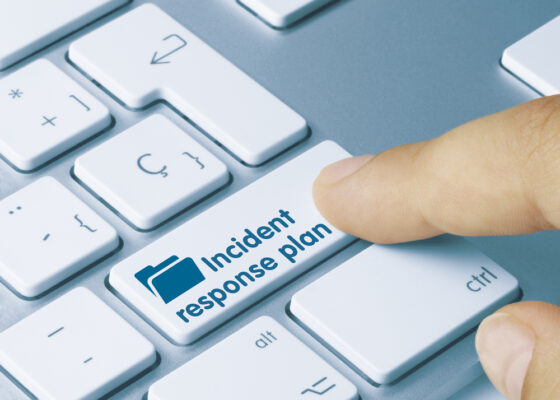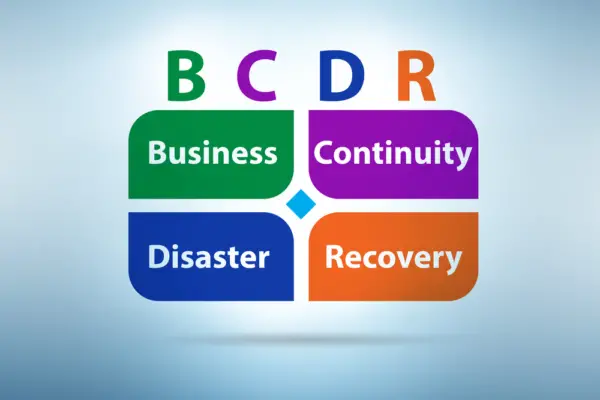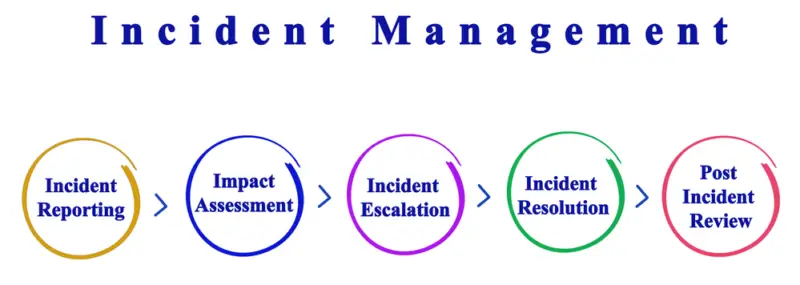Importance of efficient major incident management for risk practitioners
In the ever-evolving landscape of risk management, efficient primary incident management emerges as a critical component for professional risk practitioners.
These skilled individuals are pivotal in identifying and mitigating potential organisational risks, safeguarding operations, and ensuring business continuity. However, the ability to effectively manage significant incidents truly sets them apart.
When we talk about major incidents, we refer to events that can cause significant disruption, damage, or loss for an organization.
These incidents can range from Natural Disasters and cyber-attacks to system failures and supply chain disruptions. For risk practitioners, having a deep understanding of significant incidents and the ability to handle them efficiently is paramount.
The importance of efficient central incident management cannot be overstated. It allows risk practitioners to respond promptly and effectively when faced with critical situations, minimizing the impact on the organization and its stakeholders.
By employing a structured and proactive approach to significant incident management, these professionals can reduce downtime, mitigate financial losses, protect the organization’s reputation, and enhance overall resilience.
Moreover, efficient significant incident management enables risk practitioners to gain valuable insights into the root causes of incidents. Through comprehensive incident analysis and lessons learned, they can identify areas for improvement, refine risk management strategies, and implement preventive measures to mitigate similar incidents in the future.
Risk practitioners need to embrace key elements of primary incident management to achieve this level of efficiency. These include incident identification and reporting, prioritization, communication and collaboration, incident response and resolution, and incident analysis and lessons learned.
By integrating these elements into their practices, risk practitioners can create a robust framework ensuring swift and effective response to major incidents.
In the following sections, we will delve into each of these key elements, exploring best practices, challenges faced by risk practitioners, and strategies to overcome them.
Additionally, we will highlight the significance of establishing clear incident management processes, building a skilled and dedicated incident response team, implementing effective communication channels, utilizing incident management tools and technologies, and conducting regular incident management training and drills.
Efficient major incident management is vital for risk practitioners to safeguard organizations from potential threats. By embracing a proactive approach and implementing best practices, risk practitioners can mitigate the impact of major incidents, enhance organizational resilience, and ensure the continuity of critical business operations.

Understanding Major Incidents
Major incidents are critical events that significantly impact an organization’s operations, reputation, or financial stability. For professional risk practitioners, it is crucial to have a clear understanding of major incidents to manage and mitigate their potential consequences effectively.
Definition of Major Incidents
A major incident can be defined as an event that disrupts normal business operations and requires immediate attention and coordinated efforts to minimize its impact. These incidents are often characterized by their magnitude, complexity, and potential for severe consequences.
Synonyms: significant incidents, critical events, major disruptions
Common Types of Major Incidents
Major incidents can take various forms, each presenting unique challenges and risks. Here are some common types of major incidents that risk practitioners may encounter:
- Natural Disasters: Natural disasters such as earthquakes, hurricanes, floods, or wildfires can cause extensive damage to infrastructure, disrupt supply chains, and pose risks to employee safety.
- Cybersecurity Breaches: With the increasing reliance on technology, cybersecurity breaches have become a prevalent type of major incident. These breaches can result in data breaches, system outages, and financial losses.
- Industrial Accidents: Accidents in industrial settings, such as chemical spills, explosions, or equipment failures, can have severe consequences for human health and the environment.
- Public Health Emergencies: Outbreaks of infectious diseases, pandemics, or other public health emergencies can disrupt normal operations, impact employee well-being, and require swift crisis management.
- Product Recalls: A product recall may be necessary when a product poses safety risks or fails to meet quality standards. Product recalls can lead to financial losses, damage to brand reputation, and potential legal liabilities.
- Terrorist Attacks: Acts of terrorism, including bombings, shootings, or cyber-attacks, can cause widespread panic, loss of life, and significant disruption to public services and business operations.
Understanding these common types of major incidents provides risk practitioners with a foundation for developing effective incident management strategies and response plans. By identifying and analyzing the potential risks associated with each type of incident, practitioners can proactively implement measures to mitigate their impact.
Synonyms: major disruptions, critical events
The next section will explore the key elements of efficient major incident management essential for risk practitioners to respond to and resolve major incidents effectively.
Key Elements of Efficient Major Incident Management
Efficient major incident management is crucial for risk practitioners to mitigate and minimize the impact of major incidents effectively. By promptly identifying, prioritizing, and resolving incidents, risk practitioners can ensure the smooth operation of their organizations and safeguard against potential risks.
This section will explore the key elements of efficient major incident management that every risk practitioner should know.
Incident Identification and Reporting
The first step in efficient major incident management is identifying and reporting incidents. Risk practitioners must detect and promptly escalate potential incidents to the appropriate channels.
This involves establishing a robust incident management process that encourages employees to report incidents in a timely manner. By effectively capturing incident details, risk practitioners can gain valuable insights into the nature and scope of the incident, enabling them to take appropriate actions.
Incident Prioritization
Once incidents have been identified and reported, the next element of efficient major incident management is incident prioritization. Not all incidents are created equal, and risk practitioners must assess each incident’s severity and potential impact to prioritize their response.
This involves evaluating the potential risks associated with each incident and determining how they should be addressed. Risk practitioners can allocate their resources effectively by prioritizing incidents based on urgency and impact and ensuring that critical incidents receive immediate attention.
Communication and Collaboration
Efficient major incident management heavily relies on communication and collaboration. Risk practitioners must establish clear lines of communication within their organization, ensuring that incident-related information flows seamlessly between stakeholders.
This involves fostering a culture of open communication and encouraging cross-functional collaboration. By facilitating effective communication and collaboration, risk practitioners can ensure that all relevant parties are informed and involved in the incident management process.
Incident Response and Resolution
Risk practitioners swing into action in the incident response and resolution phase to address the identified incidents. This involves deploying the necessary resources, such as the incident management team, to contain, mitigate, and resolve the incidents.
Timely and coordinated response efforts are essential to minimize the impact and prevent escalation of incidents. Risk practitioners must follow a well-defined incident management workflow, leveraging their expertise and incident management tools to streamline the resolution process.
Incident Analysis and Lessons Learned
The final element of efficient major incident management is the incident analysis and lessons learned. Once an incident has been resolved, risk practitioners should conduct a thorough analysis to understand its root causes and identify areas for improvement.
This involves examining the incident management process, identifying any gaps or deficiencies, and implementing corrective measures. By embracing a culture of continuous improvement, risk practitioners can enhance their incident response capabilities and ensure that similar incidents are prevented in the future.
Efficient major incident management requires a comprehensive approach encompassing incident identification and reporting, prioritization, communication and collaboration, incident response and resolution, and incident analysis and lessons learned.
By adhering to these key elements, risk practitioners can effectively navigate the complexities of major incidents and safeguard their organizations against potential risks.
Continue reading about incident management teams and learn how to build a skilled and dedicated team for efficient major incident management.

Best Practices for Major Incident Management
Efficient major incident management is crucial for professional risk practitioners to effectively mitigate risks and minimize the impact of major incidents.
Implementing best practices in major incident management, risk practitioners can ensure a streamlined approach towards incident identification, response, and resolution. This section will delve into five key best practices risk practitioners should consider.
Establishing Clear Incident Management Processes
To effectively manage major incidents, it is essential to establish clear incident management processes. These processes serve as a roadmap, guiding risk practitioners through the necessary steps to address and resolve incidents in a timely manner. A well-defined incident management process should include:
- Incident categorization: Categorizing incidents based on severity and impact allows risk practitioners to prioritize their response efforts accordingly.
- Escalation procedures: Clearly defined escalation procedures ensure that incidents are escalated to the appropriate level of authority when necessary, enabling swift decision-making.
- Documentation and tracking: Maintaining detailed documentation and incident tracking helps create an audit trail and facilitates incident analysis and reporting.
Building a Skilled and Dedicated Incident Response Team
A skilled and dedicated incident response team is a cornerstone of efficient major incident management. This team should consist of individuals with diverse expertise and experience, including subject matter experts from relevant departments.
Each team member should clearly understand their roles and responsibilities during major incidents. By fostering a culture of collaboration and effective communication, the incident management team can work together seamlessly to resolve incidents promptly.
Implementing Effective Communication Channels
Effective communication is vital during major incidents to ensure all stakeholders are well-informed and can collaborate efficiently. Risk practitioners should implement effective communication channels to facilitate real-time information sharing and coordination. This can include:
- Dedicated communication platforms: Utilizing dedicated communication tools like incident management systems enables instant and secure communication among team members.
- Regular updates: Providing regular updates to internal and external stakeholders helps manage expectations and keeps everyone informed of the incident’s progress.
- Escalation protocols: Establishing clear escalation protocols ensures that critical information reaches the appropriate individuals promptly, avoiding delays in incident resolution.
Utilizing Incident Management Tools and Technologies
In today’s digital age, leveraging incident management tools and technologies can significantly enhance major incident management processes. These tools allow risk practitioners to streamline incident handling, collaboration, and analysis. Some key tools and technologies include:
- Incident management systems provide a centralized incident tracking, documentation, and reporting platform. They enable efficient incident management workflow and facilitate data analysis for future incident prevention.
- Automation and artificial intelligence: Integrating automation and AI technologies into incident management processes can help automate routine tasks, expedite incident resolution, and improve overall efficiency.
Conducting Regular Incident Management Training and Drills
Regular training and drills ensure the incident management team is well-prepared to handle major incidents effectively. By conducting regular incident management training and drills, risk practitioners can:
- Test the effectiveness of their incident management processes and identify areas for improvement.
- Improve response times and enhance decision-making capabilities during high-pressure situations.
- Foster a culture of continuous learning and improvement within the incident management team.
Implementing these best practices in major incident management can significantly enhance the capabilities of risk practitioners in mitigating risks and responding to incidents promptly.
By establishing clear incident management processes, building a skilled incident response team, implementing effective communication channels, utilizing incident management tools and technologies, and conducting regular training and drills, risk practitioners can optimize their incident management capabilities and minimize the impact of major incidents.
Challenges and Solutions in Major Incident Management
Efficient major incident management is a crucial aspect of risk practitioners‘ responsibilities. However, navigating the complexities of handling major incidents can present several challenges.
In this section, we will explore some common challenges faced by risk practitioners and discuss effective strategies to overcome them.
Common Challenges Faced by Risk Practitioners
1. Time Sensitivity: Major incidents demand immediate attention, and risk practitioners often work against the clock to minimize the impact. Urgency becomes a significant challenge as they strive to respond swiftly and efficiently.
2. Lack of Clear Communication: Amid a major incident, effective communication is paramount. However, inadequate communication channels and miscommunications between team members can hinder the incident management process.
Clarity and precision in conveying information are vital for successful resolution.
3. Complex Incident Analysis: Major incidents can be multifaceted and require a comprehensive analysis to identify the root causes. Risk practitioners face the challenge of thoroughly dissecting and understanding the incident to prevent its recurrence.
4. Coordination and Collaboration: Major incidents often involve multiple stakeholders, including various teams and departments.
Coordinating efforts and fostering collaboration among these parties can be challenging, especially when each has different priorities and perspectives.
Alignment and cohesion become essential to ensure a smooth incident management workflow.
Strategies to Overcome Challenges
To tackle these challenges effectively, risk practitioners can employ the following strategies:
1. Establishing Clear Incident Management Processes: Developing a well-defined and streamlined incident management process is crucial for efficiently handling major incidents.
This includes establishing clear roles and responsibilities for each team member and defining standardized procedures for incident identification, reporting, and resolution. Referencing an incident management process can provide a framework for risk practitioners.
2. Building a Skilled and Dedicated Incident Response Team: A competent and specialized incident management team is essential for successful incident resolution. Each team member should have the expertise and skills to handle major incidents effectively.
Regular training and skill development programs can help enhance their capabilities and ensure they are well-equipped to tackle any challenge. To learn more about the importance of an incident management team, refer to our previous article.
3. Implementing Effective Communication Channels: Establishing reliable and efficient communication channels is critical to overcoming the challenges of significant incident management.
This includes utilizing real-time communication tools like instant messaging platforms or collaboration software to enable quick and seamless information exchange. Regular meetings and updates among team members also promote transparency and ensure everyone is on the same page.
4. Utilizing Incident Management Tools and Technologies: Leveraging cutting-edge incident management tools and technologies can significantly enhance the efficiency and effectiveness of central incident management.
These tools can streamline incident tracking, escalation, and resolution, enabling risk practitioners to respond swiftly and accurately. Check out our blog post to explore some of the incident management tools available.
5. Conducting Regular Incident Management Training and Drills: Continuous learning and preparedness are key to overcoming significant incident management challenges.
Regular training sessions and drills ensure that risk practitioners are well-versed in the incident management process and can confidently handle emergencies. These exercises help identify any gaps in the team’s response capabilities and provide an opportunity for improvement.
Implementing these strategies, risk practitioners can navigate the challenges of major incident management with greater ease and efficiency. Remember, overcoming these hurdles requires a combination of adaptability, preparedness, and collaboration.
With the right approach, risk practitioners can successfully mitigate the impact of significant incidents and safeguard their organizations against potential risks.

Conclusion
Efficient major incident management is paramount for professional risk practitioners. By effectively managing major incidents, these practitioners can mitigate risks, minimize their impact, and ensure the smooth operation of their organizations.
Throughout this article, we have explored the key elements of efficient major incident management and identified best practices for risk practitioners to implement.
Clear incident identification and reporting lay the foundation for effective incident management, enabling practitioners to respond to and resolve major incidents promptly. Prioritizing incidents based on severity and impact allows practitioners to allocate resources efficiently and address the most critical issues first.
Communication and collaboration are vital aspects of major incident management. Establishing effective communication channels ensures that relevant stakeholders are promptly informed and can work together to resolve incidents. Building a skilled and dedicated incident response team is crucial for a swift and efficient response.
Implementing incident management tools and technologies can significantly enhance the efficiency of major incident management. These tools streamline the incident response process, facilitate tracking and documentation, and enable real-time collaboration among team members.
Regular incident management training and drills are essential to keep practitioners well-prepared and ensure a smooth workflow during major incidents.
However, major incident management does come with its fair share of challenges. Risk practitioners often face limited resources, complex incident landscapes, and time constraints.
Nevertheless, practitioners can overcome these challenges by implementing proactive planning, continuous improvement, and effective resource allocation and optimising their incident management processes.
Continuous improvement and a proactive approach are key to adapting to the ever-evolving incident landscape and ensuring the resilience of their organizations.
For more information on incident management, feel free to explore our blog posts on topics such as the incident management team, incident management process, incident management system, incident management tools, and incident management workflow.

Chris Ekai is a Risk Management expert with over 10 years of experience in the field. He has a Master’s(MSc) degree in Risk Management from University of Portsmouth and is a CPA and Finance professional. He currently works as a Content Manager at Risk Publishing, writing about Enterprise Risk Management, Business Continuity Management and Project Management.

